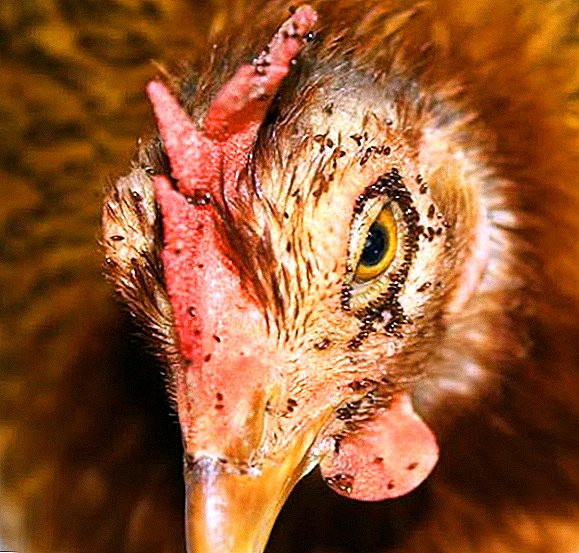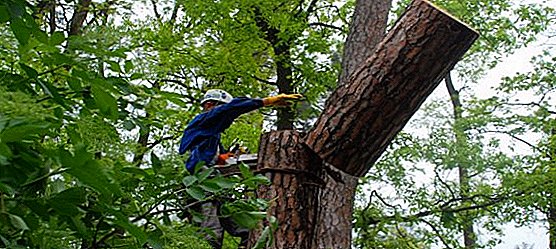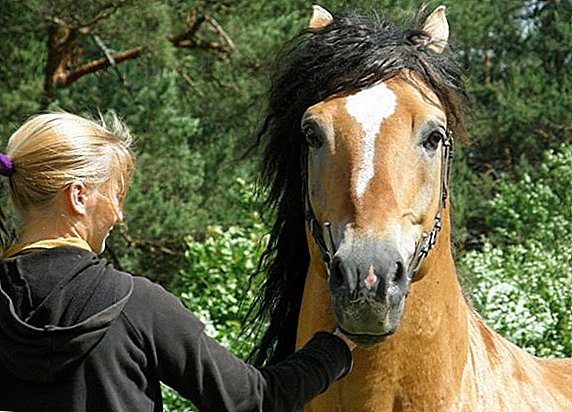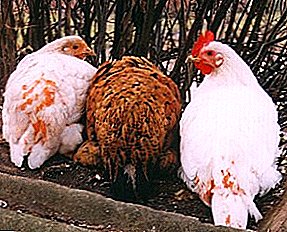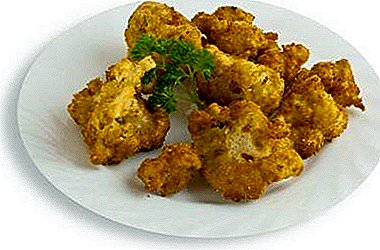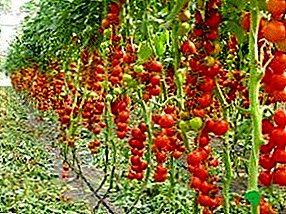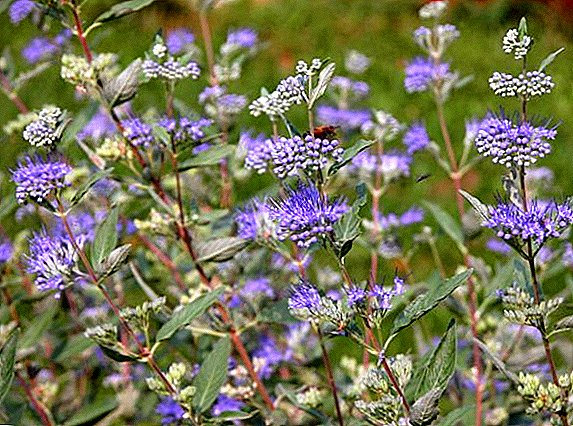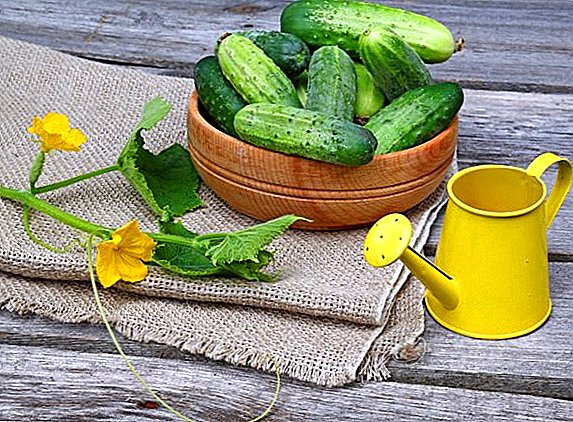 The Dutch cucumber selection has proven itself worldwide for a long time. Many summer residents and gardeners of our country use seeds, which are bred exactly by the Dutch breeders. Such hybrid cucumbers are characterized by high yields and excellent taste of the fruit. In this article we will talk about the main popular varieties of Dutch cucumbers and their benefits.
The Dutch cucumber selection has proven itself worldwide for a long time. Many summer residents and gardeners of our country use seeds, which are bred exactly by the Dutch breeders. Such hybrid cucumbers are characterized by high yields and excellent taste of the fruit. In this article we will talk about the main popular varieties of Dutch cucumbers and their benefits.
Features and benefits
The main features of the Dutch seed are high germination rates and adaptation after transplantation. In these criteria with the Dutch cucumbers can not be compared with any other varieties.
The Dutch directed production to high-quality seed preparation, which includes the following steps:
- Heat treatment. Such a process hardens the seed and adapts it to non-standard weather conditions. In addition, heat treatment protects planting material from a variety of varietal diseases.
- Etching At this stage, the seed is treated with pesticides, which allows it to be protected from a large number of diseases and pests. The processes of dressing brought the Dutch to perfection, so the pesticides in no way affect the high taste of the fruit.
- Calibration. Selection of seeds of the same size, which have high germination rates. The Dutch have succeeded in this business, and do not offer the buyer a seed lot, where 50% of the production will be a marriage.
- Packaging. Designed from a special protective material that prevents the penetration of air and moisture before planting.
 All the above stages of production take place under strict robotic and human control, therefore, domestic gardeners and gardeners are often satisfied with the yield and taste of the fruit of the Dutch selection.
All the above stages of production take place under strict robotic and human control, therefore, domestic gardeners and gardeners are often satisfied with the yield and taste of the fruit of the Dutch selection.Did you know? Spikes on cucumbers are formed in order to remove excess moisture from the fruit.All varieties and hybrids of cucumbers, which were created in the territory of the Kingdom of the Netherlands, have several advantages:
- disembarkation can be made both in greenhouses, and under the open sky;
- resistance to virtually all varietal diseases and pests;
- fruits are universal and suitable for canned food, fresh salads, etc .;
- high taste and lack of bitter taste in the fruit;
- yield with normal care is very high, cucumbers of the correct form;
- there are bee pollinating varieties that do not require pollination.
Popular varieties
There is a huge amount of cucumber originally from Holland. Some prefer early ripening varieties, others late ripening. Below we describe the most popular Dutch cucumbers with different ripening terms.
Early maturing
The main early ripe cucumbers of the Dutch selection:
- "Herman F1". One of the most popular varieties. Differs in ultrafast fruit ripening, protection from various diseases and high yields. Fruits of a grade "Herman F1" green, the correct form, without bitterness, universal use. The plant forms powerful bushes, from 4 to 7 fruits can be formed on each of the nodes. "Herman F1" is pollinated without the help of bees.

- "Meringue F1". Super early self-pollinated cucumber variety of Dutch production. The fruits will pleasantly pamper your taste buds with their aroma. The average weight of cucumbers is 80-100 g. "Meringue F1" is protected from downy mildew, peronosporoza and other diseases. The fruits are universal, bitterness is not felt. The bush bears fruit for a long time. Technically correct feeding helps to get beautiful and tasty fruit until the beginning of October.

- "Balcony". Bred by breeders specifically for indoor cultivation. The grade differs in the early term of maturing, chic of sprawling leaves. Zelentsy are medium-sized, oblong-cylindrical in shape, with light whitish pubescence. The fruits have a pleasant sweetish taste, bitterness is completely absent.
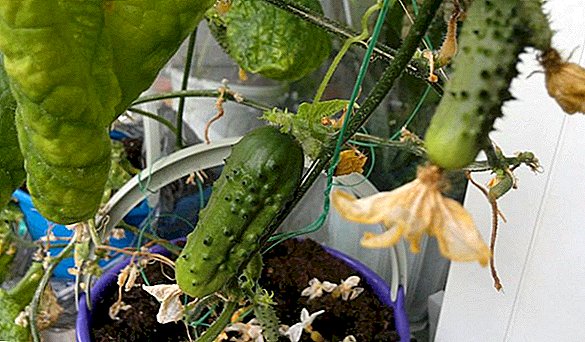
- F1 Alliance. Such greenhouses you can collect already on the 38-41th day. For the ovary on the plantations need swarms of bees. Fruits of medium size, high taste, thin skin and lack of bitterness. The bush actively fructifies at the initial stage of growth. The F1 Alliance has a large root system and large leaves, which allows the plant to bear fruit even on the hottest days. The harvest is distinguished by good commercial qualities and versatility in use.
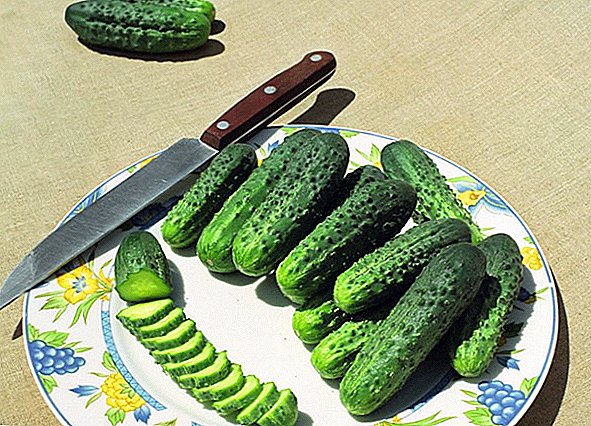
- "Atlantis F1". Fruits have a special aroma. The average weight of greengrass is 95 g, length - 11 cm. Atlantis F1 is resistant to powdery mildew, mosaic virus and cladosporia. Fruits will delight any gardener with their delicate and fragrant taste. The variety at the genetic level is protected from adverse weather conditions and is able to withstand difficult climatic changes.

Important! Seeds of Dutch hybrids can not be confused, as they differ in a special code, which follows immediately after the value "F1".
- "Accord F1". One of the best early ripe varieties of Dutch cucumbers. Summer residents mark a good growth of Zelentsov over a long period of time. Fruits differ in the big sizes (to 120 g) and bright fragrant smack with easy crisp pulp. Variety resistant to peronosporoza and other diseases. "Accord F1" - well transported, versatile in culinary use.

- "Pasadena F1". Early maturing variety of greens from botanists from the Netherlands, which is able to bear fruit for 40-60 days. It has a pleasant aroma and exquisite taste, it is able to pollinate without the participation of bees. Resistant to powdery mildew, viral cucumber mosaic and cladosporia. Fruits are cylindrical in shape, medium size, with a small whitish pubescence. "Pasadena F1" has good product indicators, in cooking it is used for universal purposes.

Mid-season
The cultivation of mid-ripened cucumbers remains universal and practically does not differ from the cultivation of other varieties. Popular varieties of cucumbers of Dutch selection with an average ripening period are:
- "Lord F1". Powerful plant with intense branching. The green cabbage is bright green, with small whitish thorns, 100-120 mm long. "Lord F1" pleases all the new fruits for a considerable time, in addition, with proper feeding, they will be fantastically beautiful and tasty. The pulp of cucumbers is crispy, saturated, without bitterness, used by cooks for cooking a variety of dishes. The variety at the genetic level is protected from a variety of diseases. Winter hardiness in "Lord F1" is good, so it can be planted in the soil immediately, without resorting to the seedling method.
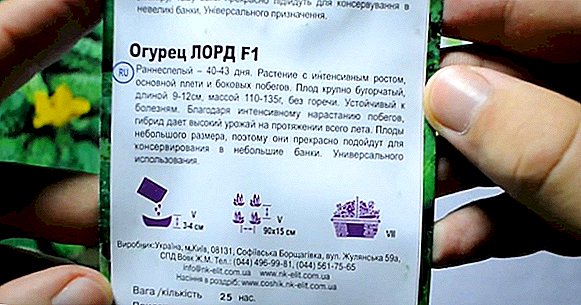
- "Marinda F1". Fruits are tied without the participation of pollinating bees. This hybrid, with proper care, is able to actively bear fruit, and its greens almost never turn yellow. The bush of the "Marinda F1" is formed medium-sized, not dense, while the harvest process is very convenient. Fruits are tuberculate, with a slight whitish pubescence, oval-cylindrical shape, medium size. Tastes are excellent, bitterness is "extracted" at the genetic level. "Marinda F1" is resistant to cucumber mosaic, scab, cladosporia, powdery mildew, etc. It is universal in use.

- "Regina F1". Mid-season hybrid from Dutch breeders, bee-pollinated. Fruits of medium size (70-90 g), oval-cylindrical in shape, bright green, have a special cucumber flavor. Taste quality remains at the highest level when used both fresh and pickled. The variety is protected from a complex of diseases, with proper care it can bear fruit for a long time.

Did you know? On the territory of Russia cucumbers are grown since the beginning of the XVI century.
- "Farmer F1". Designed for cultivation in the open air (in such cases, the fruit will be beautiful, bright green, fragrant). At the genetic level, it is protected from low temperatures, which allows you to harvest until the beginning of the first frost. The variety needs bee pollinating, protected from cladosporia, powdery mildew, cucumber mosaic, etc. The yield is high, the quality of trademarks is excellent. Crisp greens, dense, cylindrical, medium-sized, fragrant, without bitterness, versatile in use.
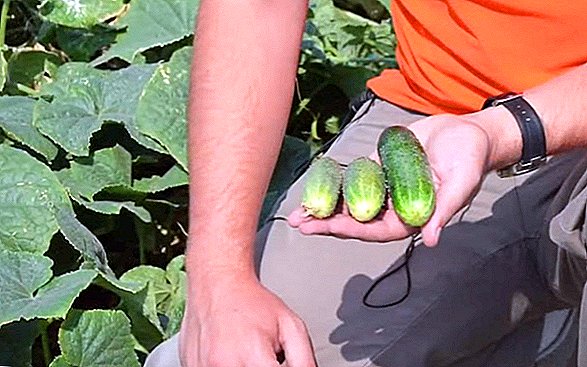
- "Claudia F1". The hybrid gives a qualitative, plentiful and amicable harvest. Designed for universal cultivation (direct and transplanting planting in open and protected ground). Ovaries are pollinated with bees. The flesh is crunchy, has no voids, the bitterness is "expelled" at the genetic level, fragrant, which is why cucumbers of this variety are universal in cooking. "Claudia F1" at the genetic level is protected from a complex of diseases.
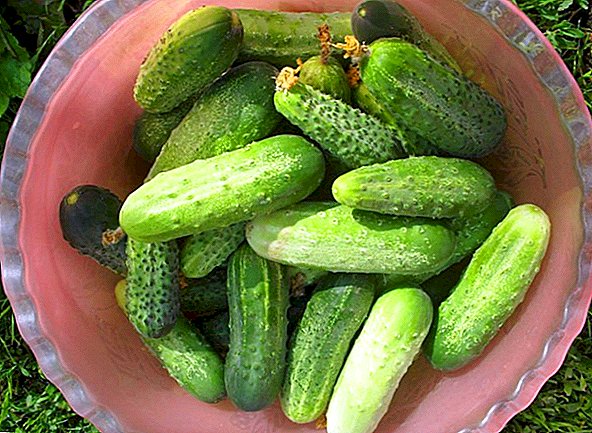
Late-ripening
Late-ripening Dutch cucumber seeds are not so many, some of them are still unknown to gardeners and summer residents of our country. We identified two of the most popular types of late maturing Zelentsov:
- "Isid F1". Popular greenhouses among summer residents and gardeners of our country. They mature long, but surpass many of the hybrids described above in taste characteristics. "Isid F1" forms a lush and wide shrub, which bears fruit before the onset of the first negative temperatures. Hybrid flesh is very fragrant and will give spice to any dish. The variety is genetically protected from damage by insects and pathogenic bacteria and viruses.

Important! Many gardeners and gardeners are confident that the self-pollinated varieties of Zelentsovo are much tastier than parthenocarpic ones. In addition, the seeds inside these fruits contain much more useful vitamins and minerals.
- "Julian F1". The gardeners have fallen in love with this variety for the fact that its fruits can lie for a long time in the beds and not overstep (green leaves remain dense, do not turn yellow and do not curl). Fruits are oval-cylindrical, with a pleasant cucumber flavor. Zelentsy "Juliana F1" will delight you with their fruiting before the onset of the first negative temperatures. The variety practically does not affect various pests, and if the bushes are properly and timely fed, the fruiting can be extended by 2-3 weeks.

Growing rules
Growing beautiful cucumber bushes is not so simple, for this you need to follow some rules and know the subtleties and secrets of this process. First of all, you need to choose the right site for planting seeds. The best predecessors of cucumbers will be Bulgarian pepper, carrots, tomatoes, cabbage, onions. On the place of melon crops cucumber bushes are not planted, as these plants are affected by the same diseases.
Cucumber seedlings should be planted in a sunny, windless place. If you plant it in the shade, the fruit will have bad taste. Before planting, the soil is disked to a depth of 8-12 cm. After that, phosphate, potash and nitrogenous fertilizers are applied in equal proportions (if the soil is loamy). In general, for planting cucumbers should choose soil with a high content of mineral and organic substances.  In open ground, seedlings need to be planted as soon as the soil is well warmed. The average daytime air temperature should be at least +12 ° C. If the landing is done earlier, then you need to provide a film cover. Seedlings are transplanted only when 2-3 small leaves form on it. If you are going to plant the seeds immediately in the open soil, then they need to be hardened, and after planting plenty of water. Seed material is deepened by 2-4 cm (depending on the type of soil, seeds are deepened by only 2 cm in heavy soil).
In open ground, seedlings need to be planted as soon as the soil is well warmed. The average daytime air temperature should be at least +12 ° C. If the landing is done earlier, then you need to provide a film cover. Seedlings are transplanted only when 2-3 small leaves form on it. If you are going to plant the seeds immediately in the open soil, then they need to be hardened, and after planting plenty of water. Seed material is deepened by 2-4 cm (depending on the type of soil, seeds are deepened by only 2 cm in heavy soil).
Did you know? July 27 is the International Day of Cucumber.Immediately after planting, cucumber bushes need to be fed abundantly. At the initial stage of growth, crops will need nitrogenous fertilizers, which are able to stimulate the active growth of leaves and the development of the root system. When the first ovaries appear, the bushes should be fed with potash and phosphate fertilizers, as they will give a beautiful shape and good taste to the fruits. With feedings do not need to overdo it. For the entire growing season, cucumbers are fed 2-3 times.
 For cucumber plantation need to properly care. Regularly weed between the rows, remove all excess weeds. After weeding the bushes, it is advisable to water, spud, and the soil to be mulched.
For cucumber plantation need to properly care. Regularly weed between the rows, remove all excess weeds. After weeding the bushes, it is advisable to water, spud, and the soil to be mulched.It should be noted that watering is the main procedure for the care of plants. Shrubs that will be little watered, can dry out ahead of time or give bitter fruit. Young plants are watered every 2-3 days if no natural precipitation is observed.
Among the popular varieties of cucumbers should pay attention to the spring, finger, Taganay, Competitor, Nezhinsky, Zozuliu.In the event of the appearance of diseases or pests, cucumbers should be treated with protective preparations in a timely manner, since the yield may sharply decrease.
In this article we told you about the most popular varieties of Dutch cucumbers of different ripening terms, and now the choice is yours. If you follow the correct technology of planting and care, then any of the above varieties will certainly delight you with an abundance of their fruits.

















